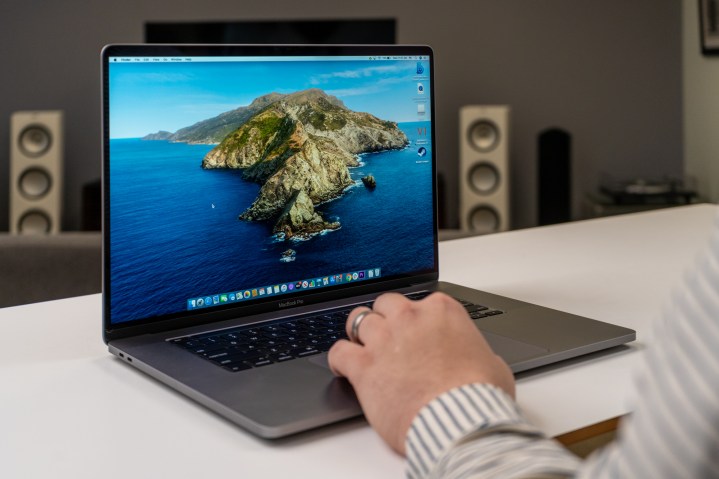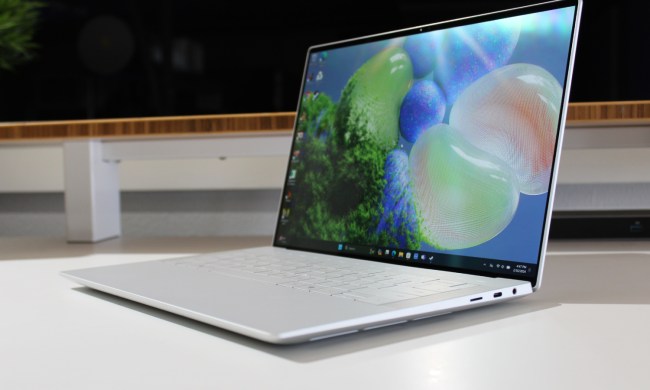Now that Apple has updated the MacBook Pro 13-inch with the Magic Keyboard and double the storage, it has become more of a worthy competitor to the MacBook Pro 16-inch. If you are thinking of getting a MacBook Pro, which should you buy?
In this guide, we will take you through the major differences between the two, explaining where each excels and struggles. By the end, you should have a much clearer view of which MacBook Pro is best for you.
Performance

Outside of price, performance is the single biggest difference between the MacBook Pro 16 and MacBook Pro 13. On paper, the larger laptop is leagues ahead here, but what does that mean in practice?
The core count is the first thing to consider. The 13-inch MacBook Pro comes with the option of either the base-level 8th-gen Intel model or the $1,799 10th-gen model. Either way, it’s a quad-core processor. The MacBook Pro 16, meanwhile, starts with a six-core, 16-thread processor. You can even bump the 16-inch up to a Core i9 eight-core chip. Each core is like having an extra player on your team. More cores mean more power at your disposal, like a football team with an extra player on the field.
Straightaway, that gives the MacBook Pro 16 a big advantage, especially if you’re planning to use it for content creation or heavy applications. While we found the MacBook Pro 13-inch beat most fellow 13-inch competitors in our review, it is still way behind the MacBook Pro 16. You can get away with running Photoshop or Lightroom on the 13-inch, but if you’re editing 4K video, you’ll want the extra cores and threads of the larger MacBook Pro to speed up renders.
The MacBook Pro 16 also benefits from Apple’s completely redesigned cooling system. Apple claims this incorporates a heat sink that is 35% larger than on the previous-generation MacBook Pro, resulting in 28% better airflow. In our review, we said the difference was “astounding,” with the MacBook Pro 16 “[leaving] its predecessor in the dust in every benchmark and real-life test” we ran. The MacBook Pro 13 does not have this overhauled thermal system, meaning you are likely to get much more performance out of the larger MacBook Pro.

What about graphics? Apple has traditionally reserved dedicated graphics chips for its larger laptops, partly due to the limited space available in the MacBook Pro 13, and partly to promote the bigger models as being more premium. That is no different in this comparison.
The MacBook Pro 16-inch has many graphics options, from a 4GB AMD Radeon Pro 5300M to a spendy Radeon Pro 8GB 5500M with faster HBM2 memory. The MacBook Pro 13, meanwhile, does not have a dedicated graphics option at all, instead having to rely on the Iris Plus Graphics provided by its 8th- and 10th-generation Intel processors. While the 10th-generation integrated graphics chips are much improved over previous-generation processors, they cannot compete with the AMD Radeon Pro graphics in the MacBook Pro 16. Whether it’s for gaming, video editing, or 3D modeling, that discrete graphics card provides exponentially better performance.
The final consideration when it comes to performance is RAM. Here, the MacBook Pro 13 has improved compared to years past, offering up to 32GB of speedy 3,733MHz LPDDR4X memory. However, there is a notable caveat in that the speed and amount of RAM you get depends on your processor choice. The lower-priced MacBook Pro 13 models are stuck on 8th-generation Intel processors and are also limited to either 8GB or 16GB of slower 2,133MHz LPDDR3 memory. If you want the faster RAM — or up to 32GB of it — you need to buy one of the more expensive MacBook Pro 13 models that run 10th-generation Intel processors. We are pretty disappointed by that.
The MacBook Pro 16 has no such complications, as both of its models use 2,666MHz DDR4 memory. It is not quite as fast as the 3,733MHz RAM in the MacBook Pro 13, but RAM capacity makes more of a difference than RAM speed in most cases anyway. What is more important is that the MacBook Pro 16 offers up to 64GB of memory. That is more than most people need, but if you do require that much, the MacBook Pro 16 is your go-to choice.
Portability, size, and battery life

Performance is an easy win for the MacBook Pro 16, but portability turns the tables. The MacBook Pro 13 measures 0.61 by 11.97 by 8.36 inches and weighs 3.1 pounds. In comparison, the MacBook Pro 16 comes in at 0.64 by 14.09 by 9.68 inches and weighs 4.3 pounds. That is the kind of difference you will notice if you sling one in a backpack and carry it around all day. Of course, 3 extra inches of screen real estate might be worth the weight for some.
The other key component when considering portability is battery life. There is no point heading out for a day on the road if your laptop is only going to last a couple hours.
Apple claims the MacBook Pro 13 will give you up to 10 hours of wireless web browsing and 10 hours of Apple TV app movie playback. When we reviewed the MacBook Pro 13, we got around 6.5 hours in a typical workday of using web apps, which is way below Apple’s stated figures. The 13-inch’s 2,560 x 1,600 display plays a role in this — the MacBook Pro 13 lasted longer than 4K rivals, but far less than 1080p laptops we have tested.
In comparison, Apple says the MacBook Pro 16 offers up to 11 hours for both wireless web browsing and Apple TV app movies. That is partly due to the much larger battery in the bigger laptop — the MacBook Pro 16 comes with a 100-watt-hour battery (the biggest allowed by the Federal Aviation Administration), compared to the 58-watt-hour or 58.2-watt-hour battery (depending on the model) in the smaller MacBook Pro. In practice, however, we found the MacBook Pro 16 did not live up to Apple’s claims either, only lasting around 5.5 hours during an average workload, which included “dozens of tabs, streaming music in Spotify, and Slack.”
Is the MacBook Pro 16 worth the cost?

With all this power at its disposal, it should come as no surprise that the MacBook Pro 16 is, on the face of it, a lot more expensive than the MacBook Pro 13. The smaller MacBook Pro starts at $1,299, while even the most affordable MacBook Pro 16 will set you back a whopping $2,399 — over $1,000 more.
However, it is not an open-and-shut case. If you buy the $1,299 MacBook Pro 13 — or even the upgraded $1,499 model — you will find yourself stuck on an outdated 8th-generation Intel processor and slower RAM. If you want more up-to-date components and two more Thunderbolt 3 ports, you will have to pay at least $1,799. Suddenly, the difference in price is not so great.
That extra $600 buys a much more powerful computer, though you’ll need to pay an extra grand for the Core i9. It is the absolute best choice if you must do demanding work, and if that sounds like you, you might just have to bite the bullet and go for it. That’s especially true if you need the extra graphical capability for tasks like 3D modeling or gaming. You also get a few other nice benefits with the MacBook Pro 16, including the redesigned thermal system, meaning your processor will get throttled less often and your device will run cooler. You also get a larger display with much thinner bezels, giving you a more immersive, enjoyable visual experience. AFinally, there are the incredible speakers that are, quite simply, the best on any laptop.
If you can afford it, the MacBook Pro 16 offers a significant boost in performance.
If your workflow is more focused on heavy multitasking and lighter applications, the MacBook Pro 13-inch will do you just fine. It can even handle some lighter content creation like programming or photography.
When comparing the MacBook Pro 13 and the MacBook Pro 16, picking a winner largely depends on your current situation and the type of work you expect to do. If you do not need anything particularly powerful, saving yourself some money and getting the MacBook Pro 13 (or even the MacBook Air) would be your best bet.
If you can afford it, the MacBook Pro 16 offers a significant boost in performance. It not, there are lots of other great MacBooks to choose from. In a situation where you really need a MacBook now and do not like the larger device’s price tag or footprint, consider the MacBook Pro 13. Just make sure to carefully consider what processor to get, and do not forget to give the MacBook Air a once-over to see if it meets your needs.
Finally, if you can wait a little longer, Apple is widely expected to bring out a completely overhauled 14-inch MacBook Pro in late 2020 or early 2021. This will replace the MacBook Pro 13, bringing many of the improvements found on the MacBook Pro 16, like better thermals and a thinner bezel. If time is not of the essence, that might be your best choice.



